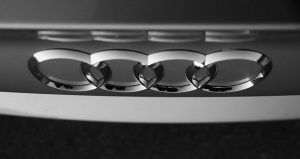PCP Claims Guide: Navigating Vehicle Wear and Tear Claims in the UK
Understanding PCP claims in the UK is essential for car lessees. A Personal Contract Purchase (PCP)…….

Understanding PCP claims in the UK is essential for car lessees. A Personal Contract Purchase (PCP) agreement involves an initial deposit, fixed monthly payments, and a final balloon payment. To manage a PCP claim effectively, one must maintain their vehicle, addressing normal wear and tear throughout the lease term. Upon returning the car, document any existing damage with photographs to substantiate your PCP claim, ensuring it reflects what is typical for a vehicle of its age and usage. Lenders will compare this against their wear and tear standards to determine if the damage is within acceptable limits, potentially reducing the final balloon payment. Proactive communication with your finance provider is recommended before the end of the agreement to avoid disputes. At the end of the PCP term, the car's value is assessed based on its condition; well-maintained cars retain more value and require a lower balloon payment. PCP claim management requires careful maintenance, thorough documentation, and understanding of the wear and tear policy outlined in your agreement to ensure you are prepared for the final financial commitment and can avoid issues when returning the vehicle or opting to purchase it outright. Always refer to your specific PCP agreement for detailed guidelines on submitting a PCP claim in the UK.
Navigating PCP claims in the UK can be a nuanced process, particularly when it comes to vehicle wear and tear. This article demystifies the mechanics of PCP claims for car damage, guiding you through the intricacies of maintaining your vehicle within its finance agreement. With a focus on practical steps and clear explanations, readers will gain a comprehensive understanding of how to effectively manage their PCP claim for wear and tear, ensuring they adhere to the UK’s specific guidelines and avoid common pitfalls.
- Navigating PCP Claims for Vehicle Wear and Tear in the UK
- Understanding the Mechanics of PCP Claims for Car Damage
- Step-by-Step Guide to Making a PCP Claim for Wear and Tear in the UK
Navigating PCP Claims for Vehicle Wear and Tear in the UK

When managing Personal Contract Purchase (PCP) agreements for vehicle wear and tear in the UK, it’s crucial to understand the terms and conditions set forth by lenders. PCP is a popular financing option that allows drivers to pay an initial deposit followed by fixed monthly payments, with a final balloon payment to own the vehicle outright. As part of the agreement, the vehicle is expected to retain a certain amount of value at the end of the contract term. Wear and tear are inevitable over time, so it’s important to assess potential damage within the context of what is considered ‘fair wear and tear’ by the finance company. Understanding this distinction is key when submitting PCP claims in the UK.
The process of claiming for wear and tear at the end of a PCP agreement can be navigated more effectively with clear guidance. Upon returning the vehicle, document all existing damage thoroughly. This includes taking photographs that highlight any scratches, dents, or mileage that exceeds what is typical for the car’s age and usage. When submitting PCP claims, provide this evidence to support your case. Lenders will evaluate the condition of the vehicle against their guidelines for acceptable wear and tear. If the damage falls within these parameters, you may be entitled to reduce the final balloon payment accordingly. It’s advisable to review your PCP claim with the lender beforehand to avoid any discrepancies and ensure a smooth handover at the end of your agreement.
Understanding the Mechanics of PCP Claims for Car Damage

When a vehicle is under a Personal Contract Purchase (PCP) agreement, understanding the implications of wear and tear during the term of the contract is crucial for lessees to avoid potential issues at the end of the contract. PCP claims for car damage are distinct from traditional insurance claims; they pertain specifically to the depreciation of the vehicle caused by typical use. In the UK, PCP agreements are a popular method for acquiring a new car as they allow drivers to pay an agreed fixed amount over an agreed term, with the option to purchase the vehicle at the end of the contract or return it and end the agreement.
During the tenure of a PCP contract, the driver is responsible for maintaining the vehicle in good condition, avoiding excessive wear and tear. This means that regular servicing and minor repairs are often the lessee’s responsibility. At the end of the PCP term, the car is assessed for its value, which considers not only its age but also its condition. If the car has been well-maintained, it will retain more of its value, and the final balloon payment to own the vehicle outright will be less. Conversely, if there are significant scratches, dents, or other forms of damage resulting from poor maintenance or accidental wear and tear, the car’s value—and consequently the required balloon payment—will be higher. Understanding this dynamic is essential for PCP lessees to manage their finances effectively and avoid unexpected costs when returning the vehicle.
Step-by-Step Guide to Making a PCP Claim for Wear and Tear in the UK

When a vehicle is financed through a Personal Contract Purchase (PCP) agreement in the UK, the owner is responsible for maintaining the car to avoid excessive wear and tear. Should there be legitimate damage beyond what’s expected during the term of the contract, owners can make a claim for this wear and tear when the time comes to hand back the vehicle or when they wish to purchase it outright. The process for making a PCP claim for wear and tear involves several steps to ensure the claim is valid and fair.
Firstly, thoroughly inspect your vehicle before returning it or exercising the option to purchase. Identify any damage that occurred during your tenure of the car, noting especially any scratches, dents, or other issues beyond typical usage. Document these with high-quality photographs from multiple angles. Next, consult your PCP agreement to understand the terms regarding wear and tear. This will help you ascertain what is considered normal versus what might be deemed excessive. Once you’ve established the extent of the damage, contact your finance provider directly to inform them of your intention to make a claim. They will typically provide a list of approved repairers or instruct you on how to proceed with an independent garage. Ensure all repairs are completed by a professional and that you keep receipts for any services rendered. After repairs are made, submit the necessary paperwork, including photographs, estimates, and evidence of repairs, along with a PCP wear and tear claim form to your finance company. They will then assess the claim and provide guidance on the next steps, which may include an inspection of the repaired vehicle. Following their assessment, if your claim is accepted, you’ll be relieved of some or all of the additional charges due upon return or purchase of the vehicle. Always refer to your PCP agreement for specific details and conditions related to making a claim for wear and tear.
When managing the end-of-contract phase for a Personal Contract Purchase (PCP) agreement in the UK, understanding the scope of wear and tear coverage is paramount. This article has demystified the process of navigating PCP claims related to vehicle wear and tear, providing clarity on what is typically covered under such agreements. By following the step-by-step guide outlined, drivers can approach their PCP claim with confidence, ensuring they are not caught off guard by unexpected expenses upon returning their vehicle. It’s clear that being well-informed about PCP claims in the UK is essential for a smooth return process. With this knowledge, vehicle owners can make informed decisions and manage their contracts effectively.







